This work-in-progress is for all ancestors who have been colonized. All peoples who suffer from trauma due to colonization. This is for la Madre Tierra, the Earth herself.
I am Honduran born. I am of the Maya Peoples, Lenca Peoples, Chorotega Peoples and of Spanish and Irish descent. I am classified by others as a Mestiza, a mix of Indigenous blood with European blood, a term that I do not embrace as it is a further erasure of the naming of my ancestral lineage. I am white passing. I was raised both in Honduras and the United States until the age of twelve. I was forbidden to speak the colonizer’s mother tongue of Spanish in the United States due to the colonization within my own family. I was told that I had to assimilate no matter what the cost. This created a schism within my own identity. I existed in the liminal space between. The Nepantla. I was neither here nor there. I lost myself.
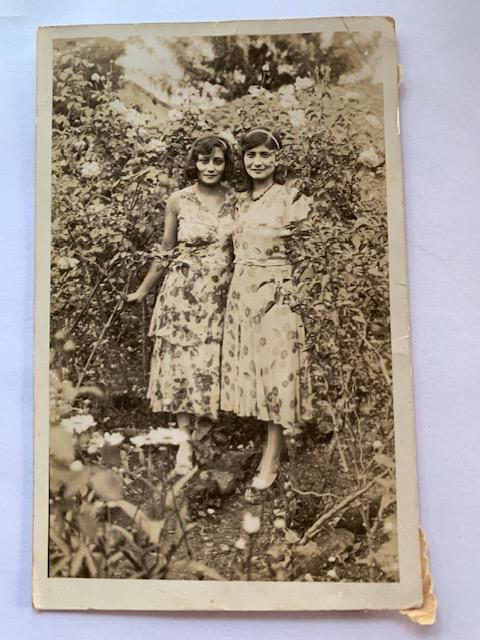 my abuelita Tite and my tía abuela
my abuelita Tite and my tía abuela
El Don. A gift.
When I was young my abuela and I shared a nightly ritual. She would make me poleada, a warm milk and wheat cereal and then she would tuck me into bed and light a candle and sit next to me and tell me to dream of numbers. This wasn’t a game. This was how she showed me that I carried a gift from the ancestors. That I see things before they happen. That I knew how to travel into different realms. That these realms contain gifts of ancestral healing and wisdom that could not be learned from any books. Every night she would whisper to me to dream of numbers and in the morning she would come in when I first awoke and she would ask me to tell her the numbers that I dreamt. She would keep a little black notebook filled with all of my otherworld numbers and sometimes we would go to a little tiendita and buy lotería tickets with the numbers that I had dreamt the night before. And then she would show me that we won. She would show me mi Don, my gift of knowing the unknown, seeing the unseen. She told me that I must always remember and honor mi Don in a sacred way and never for personal gain.
I later came to understand that my gifts were not valued by the culture I lived in. I was feared by my own mother who would say the rosary outside my bedroom door when she heard me speak to the ancestors in the ways my abuelita taught me. As a child I would often tell my mamá when an accident or death would happen. Before they happened. My mother continued to be frightened of me. I was told to keep things to myself. I became frightened of myself. When my abuelita died I forced myself to forget. I hid my gifts. I pushed them down deep within me. I silenced them. When mi Don would appear I ignored it and over time it went away. Sometimes the voices of the ancestors would rise to the surface no matter how much I tried to ignore them. They would whisper things that were to come and guide me on my path. I began to listen and follow their guidance but with hesitation. I told no one. I hid mi Don in the same way my ancestors hid.
As an adult I began to revive the seeds that lay dormant within me. I delved deep into the practices of healing and spirituality within the earth- based Curanderismo practices of my ancestors. The ones that mi abuelita taught me from within the womb. Even before. In studying and practicing these ancient ways I saw clearly who my grandmother was and is. I see who I am. I began to reclaim the Indigenous Wisdom of my ancestors, of all the Peoples of Mesoamerica.
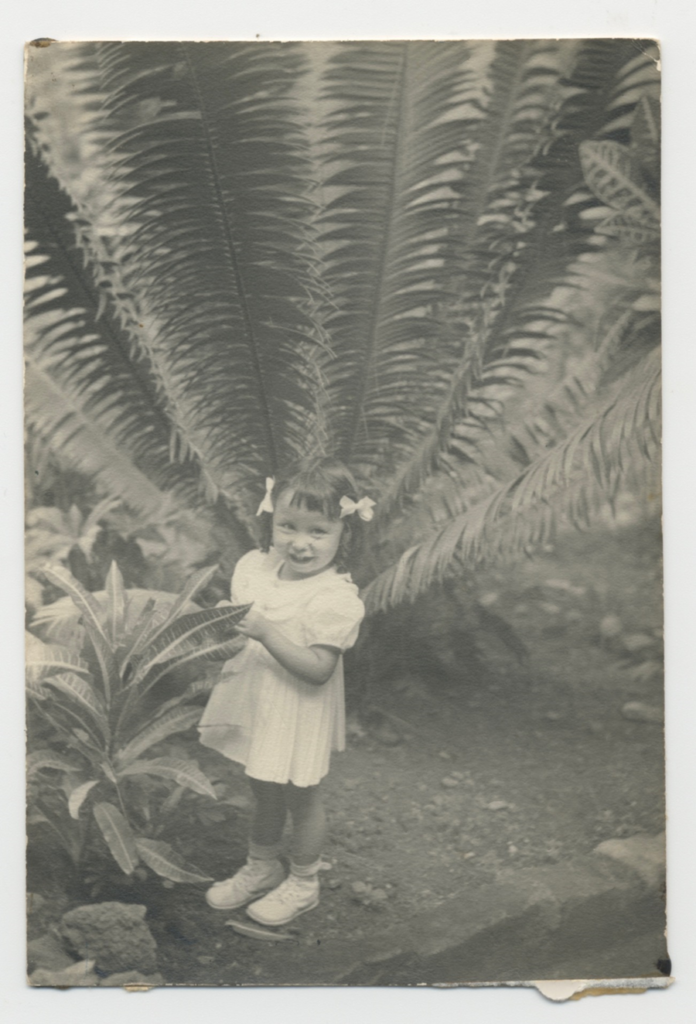 my mom in the garden of my ancestors, dating back five generations. I also used to play in this garden and learned
my mom in the garden of my ancestors, dating back five generations. I also used to play in this garden and learned
about our plant ancestors in it.
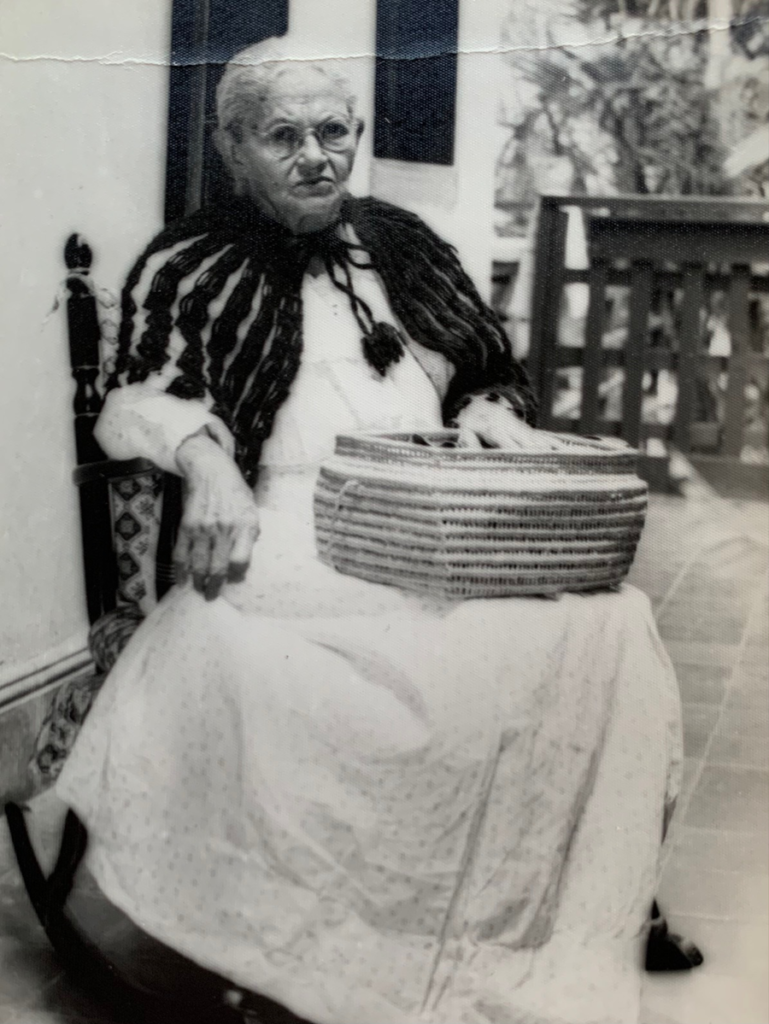 my bis abuela Agueda when she was an elder
my bis abuela Agueda when she was an elder
Transculturation. Syncretism. Subversion. Survival.
The syncretic ways of my ancestors were a necessity. This syncretism provided a safe passage through colonization. In order to keep their ancestral ways they hid them within the rituals of Catholicism. A transculturation. To avoid persecution my abuelita uttered her Catholic prayers as she administered her ancestral herbs. She practiced the Indigenous ways of healing. She was very careful about never calling herself a Curandera, a colonizer word. Before the colonizers arrived there were simply people who spoke the language of plants. The language of healing. Who knew which plant could be called upon in times of imbalance. Who knew which rituals needed to be performed. Who knew that plants were called upon not only for the physical body but for the emotions for the Spirit. My abuelita would say that she was the daughter of the Earth. And that she was una naturalista. She was la Madre Tierra’s healing helper. My abuelita was subversive. All healers are subversive. When Peoples practice the art of Indigenous ways of healing they are looked at with fear. The colonizers called out these healers as brujas as a way to control them. They knew that those who practice the Indigenous Healing Arts carry the powers of unseen worlds. It is why all natural healers continue to be seen as dangerous. Because they are in tune with and vibrate with los cosmicos. Their pulses beat with the rhythms of nature.
Subversive Dangerous Defiant Feared Uncontrollable
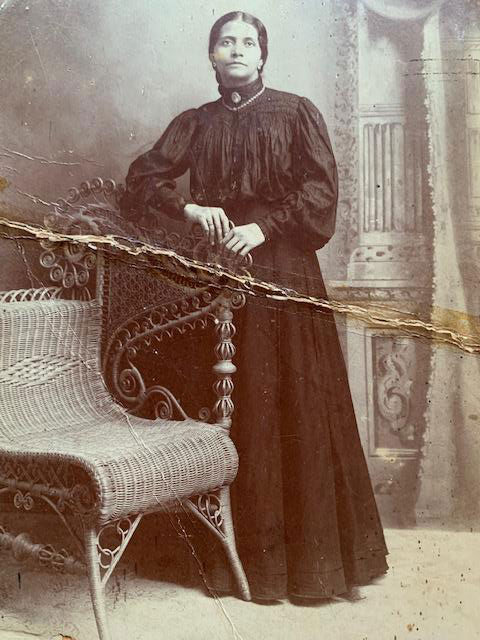 my great grandmother – my bis abuela Agueda- when she was a young woman. She started the flower shop and
my great grandmother – my bis abuela Agueda- when she was a young woman. She started the flower shop and
was a plant medicine woman
Plantas Sagradas.
Ritualistic and healing work with sacred flowers saved my family lineage from demise. With each hand my maternal lineage touched each seed, each petal and stem, each root. They were in turn serenaded by the sacred waters of the early morning dew that collected on these plants. Esta agua serenada healed my lineage and protected them. Esta agua sagrada holds the memory of the vital force of the plant. Held and dispersed into water. Taken in for thousands of years. In the same way that water carries the memory of our stories within our own bodies. Flower and Song. Where speech becomes song. Composed by los cosmicos. The poetics of las flores. The gesture of Peoples and Plants. Memory memoria memoriam.
….
How can the cosmovisions of our ancestral lineages guide us through the world of today? How can these cosmovisions teach us to care for the earth and each other today? These answers are embodied within las plantitas. It is the plants who narrate the story, the voices that remain. Plants play an important role in the cosmology of the Peoples. Archeological findings show deities and rulers depicted in art as sacred trees and sacred plants such as Maíz. Plants and their stories continue to be a part of Mesoamerican earth- based practices. The plants continue to reveal what must be done to balance all sentient beings and la madre tierra. It is time to decolonize plants and ritual and healing practices so that we can reclaim the Indigenous earth- based wisdom of our ancestors. It is time for all of the ancestors past present and future to join in the communal and reciprocal care of each other.
….
speak our words sing them loudly say them
memory lives in your bones and travels through your veins and is carried to the next generation waiting for the ones who know the ones who hear the voices los cantos of the past
what matters is that our voice is heard again.
….
Materia Médica. Medicina de la Madre.
Lineages of women and healing encompass the world over. These living Mother Medicine books and stories traveled across mountains. Across oceans. Were kept safely within the heart. Seeds carried in hair. Tied into long braids. In my ancestral lineage, healing wisdom is passed down through an oral tradition. Materia Medicas are passed down through apprenticeship to plants and through stories told and poetry sung. Passed down with reverence towards the plants. A reciprocal relationship with the plant world through ritual and ceremony. Never forgotten. Healing is not “done” by the plants. Healing does not happen when one “uses” a plant. Healing is called upon if it is what is in tune with the Spirit of both human and plant. It is a relationship of mutual care. One works with the plant. One does not use the plant.
Thousands of sacred Materia Medicas were written and rendered with las plantitas sagradas. With the sacred practices of ritual and healing. They were written on amate paper by the ancient Mesoamerican Peoples. And then were burned by the Spaniards. Were desecrated by the Spaniards. Were considered filth. And evil. Were considered the work of el diablo. These sacred texts became ash. These texts of ash nourished the earth. Texts of ash that still held the sacred healing ways of the Peoples. The deep understanding of the Cosmos. La sabiduría de las plantas, de las medicinas, las ceremonias. Buried deep within la Madre Tierra. Only a handful survived. Confiscated. Others were written after the conquest. These are whispered to carry secrets hidden within their texts. Some truths. Some deceptions. Written as ways to deceive those that forced the Indigenous Peoples to rewrite la historia.
Burned. Buried. Not forgotten.
….
La Floristería Matamoros. Todas las plantitas.
La Floristería Matamoros on Calle La Fuente opened its doors sometime during the 1920s. No one knows for sure when it opened because it was as if it had always existed. There was never a sign placed outside the door. There was no need. Everyone in town knew exactly where it was and anyone who came from another part of the country looking for flowers, would only have to ask someone on the street. They would be sent directly to La Floristería Matamoros. My family’s flower shop continued through the 1970s and then one day my abuelita closed its heavy wooden door. She knew it was time. It was heard that on this day she said “I am now like my flowers, I am curving forward just like their stems.” And with that, the door shut….
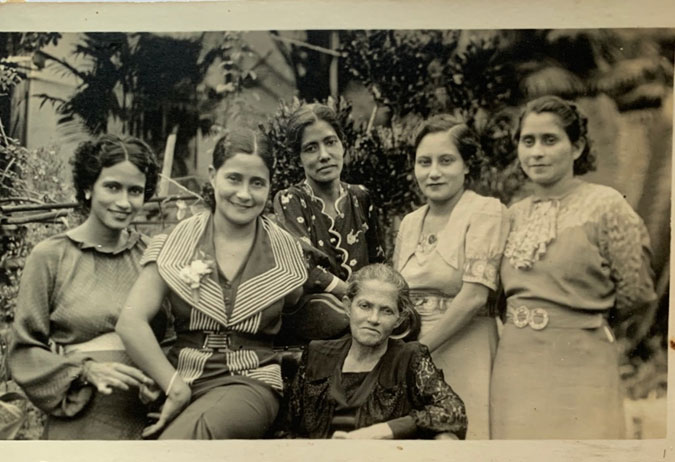 The woman with the flower in her lapel is my abuelita Tite and the elder is my bis abuela and the other women are my great aunts, my tías abuelas- they all worked together in their flower shop La floristeria Matamoros and they all lived together their entire lives. I lived with them all as a child.
The woman with the flower in her lapel is my abuelita Tite and the elder is my bis abuela and the other women are my great aunts, my tías abuelas- they all worked together in their flower shop La floristeria Matamoros and they all lived together their entire lives. I lived with them all as a child.
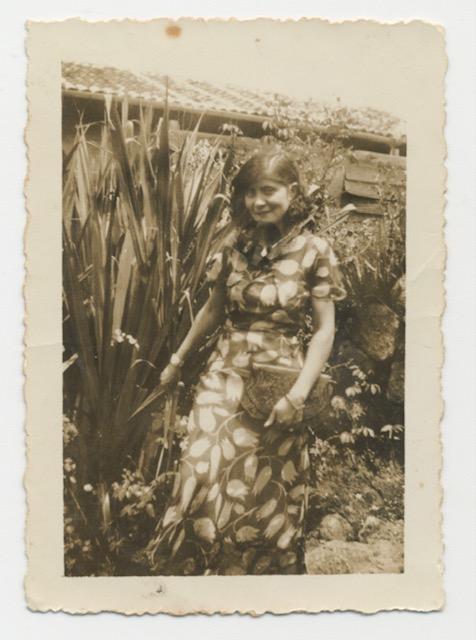 my abuelita Tite in our ancestral garden standing next to her favorite herb, zacate de limoón which is lemon grass.
my abuelita Tite in our ancestral garden standing next to her favorite herb, zacate de limoón which is lemon grass.
My first teacher, my abuelita Tite, una curandera, instilled in me a deep love and respect for the plant world. She worked only with the plants that grew in her garden. She spoke to them and cared for them as the friends and companions they were. My great aunts refused to understand the Indigenous ways of my abuelita, they had instead embraced the ways of the colonizers. They forgot that their parents came from Choluteca, a place with deep reverence for all beings. They forgot that their ancestral lineage walked from faraway places, from Mexico to Honduras, carrying their wisdom traditions in the pockets of their garments, embedded in their Spirit. They forgot that they were also a lineage of Indigenous Peoples. That their life and their medicine traditions existed because of ancestral plants. They believed instead that the only authentic medicine came from a “proper” pharmacy, administered to them by a licensed Medical Doctor.
My abuelita’s ways of healing were considered beneath them, subpar. They would say it was la medicina de las Indígenas –which always made my grandmother smile in pride. They whispered about how she spoke to her plants, they feigned fear of the green colored bottles in her home botánica filled with sacred plants, her bundles of herbs hanging and drying on the wood beams, they scoffed at her treatments and looked with disdain when she cleansed their family home with the smoke of Pine and Copal. But my abuelita continued regardless. I watched many of my great aunts walk secretly into my grandmother’s room and ask for a little something for their headache, or their insomnia, or their broken hearts. I watched my grandmother light a small candle with grace and then call upon Spirit, plant and human ancestors, and ask for guidance. I watched my great aunts tiptoe away, herbs in tow, worried if one of the other sisters would see her.
My abuelita had shelves upon shelves of her tinctures which were housed in dark green wine bottles. Each bottle had labels with her beautiful script describing what was inside and what they healed. They were placed far above where my hands could reach but I would spend countless hours walking past each one and memorizing their names. Below the bottles were jar after jar filled with dried herbs. These I also studied and often she let me open them, knowing that their fragrance and their taste would teach me more than any book. Ruda, Pericón, Hierba Buena, Hoja Blanca, Artemisa, Albahaca, Verbena, Romero, Ajenjo, Culantro, Cilantro, Santa Marta, Apazote and so on and so on. When someone came to her home in need of care she would know precisely which plantita to go to. Sometimes she sensed in advance when a visitor would be arriving and she would prepare their remedy ahead of time. As time went on no one was surprised that she already knew they would show up. And that she already knew what they needed. She would often go out to her garden and cut fresh herbs that she would need for the day. These were placed on her little table. The one where San Judas Tadeo watched over the herbs. The one where the copal burned. The one where the candles were lit. At all hours of the day and night my abuelita was called upon, always ready to share the healing of las plantitas.
Early on I saw that my grandmother split herself into two people, one the Traditional Indigenous Healer, la Curandera, the other the respected and glamorous florist. Both sides of her existed simultaneously and were called upon mutually in times of sickness of mind, body and Spirit, rituals and ceremonies of birth through death. Flowers and plants always accompanying her in these times of need, their mutual love never waned. Tite was proud of her Indigenous wisdom lineage even when shamed by her family. The plants that lived in her garden were not bothered by any of this. They continued to flourish alongside her. The fruits and the herbs gave of themselves to her as she gave of herself to them. I spent countless hours in this sacred garden. I was taught by my abuelita to ask of the plants for only what is truly needed. Never more. And to always give an ofrenda of prayer or song to my plant kin. When we consume a plant they become a part of our structure. We exist in symbiosis. Everything that they receive becomes a part of us, both reverent and destructive energies. Their environment, their care, the sun, the moon. There is a constant exchange between us, inspiration and respiration.
My grandmother taught me that the history of our family, of the land, of all the beings who lived on the land before us, continues to exist within our bodies and the bodies of the plants that grow there. That our ancestors are the plants themselves. That we are intertwined. That our history lives within the earth. Lives within the cells of each plant. The rain, the wind, the air all contain parts of us. Plants are Elders. Plants are Teachers. Plants are Family. And for this reason the stories and the plants must be known and shared, honored and protected. Mutual care and reverence must be a part of the story of plant and human relationship. There is no separation between us, not human and non human but a weaving of integrated cellular bodies.
….
Las Maestras.
Plants are a way for all to connect with and honor our ancestors, human and nonhuman, and heal generational traumas. Plants, ancestors, humans and nonhumans are all connected to the Cosmos. We need to remember this. Plants remind us how to live in knowingness. How to be aware. There are many ways to connect with plants. Working with plants is one way to connect you to consciousness. My garden is my family. The healing herbs I tend to, I take into my body. I embody my ancestors. I carry them within.
I have always been a healer. For as long as the earth has existed. My fear is understandable. My persecution real. I practiced in secret ways because I had to. But I don’t have to anymore. I cannot hold back thinking I need other ways, the right practices, herbs, flowers. The ancestors have waited long enough.
About the Author

Ethnobotanist, writer and spiritual counselor specializing in the transitions of life. De Blum’s practice includes pre- and perinatal psychology, spiritual ethnobotany, sacred birth- and-death rituals, and care of the divine spirit within us. She has served as a birth and death counselor, educator and doula for over three decades. She lives and works in Los Angeles, USA.
Return to top